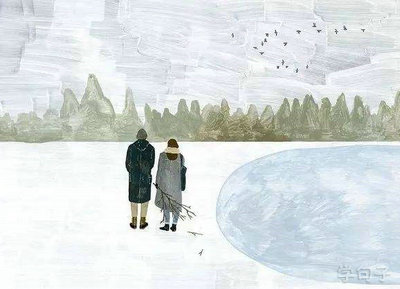
ted资料给我
喊口号也是要看演讲的情景,选择恰当的时机喊口号才能够动人心弦,我推荐:初级:《卡耐基魅力口才与演讲的艺术》中级:《演讲的艺术》中高级:《魏斯曼演讲圣经-说的艺术》高级:《TED演讲的秘密-18分钟改变世界》顶级:《乔布斯的魔力演讲》最后再推荐一部有助提高演讲的奥斯卡最佳电影:《国王的演讲》以上。
婚礼如战场的电影介绍
演讲稿怎么写演讲稿也叫演说辞,它是在较为隆重的仪式上和某些公众场所发表的讲话文稿。
演讲稿是进行演讲的依据,是对演讲内容和形式的规范和提示,它体现着演讲的目的和手段,演讲的内容和形式。
除非是个别的大师,大部分人在演讲前都要准备演讲稿范文,因此演讲稿怎么写非常重要,本文提供演讲稿范文的写作方法。
演讲稿的格式与一般文章的格式原则大致相同,分为1.开头;2.主体;3.结尾三个部分。
但演讲是具有时间性和空间性的活动,具有一定的鼓动性和感染力,因而,演讲稿范文与一般文章还是略有不同,尤其是它的开头和结尾有特殊的要求。
一、开头开头要点:要抓住听众,引人入胜演讲稿的开头,也叫开场白。
它在演讲稿的格式中处于显要的地位,好的演讲稿,一开头就应该用最简洁的语言、最经济的时间,把听众的注意力和兴奋点吸引过来,这样,才能达到出奇制胜的效果。
二、主体主体要点:环环相扣,层层深入主体是演讲稿的主要部分。
在行文的过程中,要处理好思路、节奏和衔接等几个问题。
首先是思路,思路清晰的演讲才能引导听众,最简单的思路是用数字序号来表达内容的层次,如提出3个问题,第1、第2、第3,或有3种方法等等。
数字序号在结构上环环相扣,层层深入,能表达清晰的思路。
此外,演讲稿中使用过渡句,或用“首先”“其次”“然后”等语词来区别层次,也是使演讲思路清晰的有效方法。
其次是节奏,是指演讲内容在结构安排上表现出的张弛起伏。
节奏变化会使听众不至于疲劳,如在演讲稿范文中,适当地插入幽默、诗文、轶事等,使演讲内容不单一,以便听众的注意力能够长时间地保持高度集中。
当然节奏是为内容服务的,插入的内容应该与演讲主题相呼应,另外,节奏变换过于频繁,也会造成听众注意力涣散。
第三是衔接,是把演讲中的各个内容层次联结起来,使之具有浑然一体的整体感。
由于前面提到的节奏的需要,容易使演讲稿的结构显得零散。
衔接是对结构松紧、疏密的一种弥补,它使各个内容层次的变换更为巧妙和自然,使演讲稿富于整体感,有助于演讲主题的深入人心。
演讲稿结构衔接的方法主要是运用同两段内容、两个层次有联系的过渡段或过渡句。
三、结尾结尾要点:简洁有力,余音绕梁结尾是演讲内容的自然结束。
言简意赅、余音绕梁的结尾能够震撼听众,促使听众不断地思考和回味。
演讲稿结尾没有固定的格式,可以是对演讲全文要点进行简明扼要的小结,也可以是号召性、激励性的口号,也可以是名人名言以及幽默的话,结尾的重要原则是:一定要给听众留下深刻的印象。
ideas worth spreading是什么意思
ideas worth spreading值得传播的思想双语对照词典结果:网络释义1. 传播有价值的思想例句:1.This is literally a freeing up of the concept ideas worth spreading to allow anyone toselect what those ideas are. 允许任何人表达他们的思想是“思想价值传播”观念真正的提升。
2.The nonprofit organization ted, whose tagline is ideas worth spreading, has decided tospread something else: advertising. 以“思想是值得传播的”为口号的非营利机构ted,决定传播一些其他的东西,比如:广告
关于团队精神teamwork的英文演讲稿
Fostering teamwork is creating a work culture that values collaboration. In a teamwork environment, people understand and believe that thinking, planning, decisions and actions are better when done cooperatively. People recognize, and even assimilate, the belief that “none of us is as good as all of us.” (High Five)It’s hard to find work places that exemplify teamwork. In America, our institutions such as schools, our family structures, and our pastimes emphasize winning, being the best, and coming out on top. Workers are rarely raised in environments that emphasize true teamwork and collaboration.Organizations are working on valuing diverse people, ideas, backgrounds, and experiences. We have miles to go before valuing teams and teamwork will be the norm.You can, however, create a teamwork culture by doing just a few things right. Admittedly, they’re the hard things, but with commitment and appreciation for the value, you can create an overall sense of teamwork in your organization.Create a Culture of TeamworkTo make teamwork happen, these powerful actions must occur.Executive leaders communicate the clear expectation that teamwork and collaboration are expected. No one completely owns a work area or process all by himself. People who own work processes and positions are open and receptive to ideas and input from others on the team.Executives model teamwork in their interaction with each other and the rest of the organization. They maintain teamwork even when things are going wrong and the temptation is to slip back into former team unfriendly behavior.The organization members talk about and identify the value of a teamwork culture. If values are formally written and shared, teamwork is one of the key five or six.Teamwork is rewarded and recognized. The lone ranger, even if she is an excellent producer, is valued less than the person who achieves results with others in teamwork. Compensation, bonuses, and rewards depend on collaborative practices as much as individual contribution and achievement.Important stories and folklore that people discuss within the company emphasize teamwork. (Remember the year the capsule team reduced scrap by 20 percent?) People who “do well” and are promoted within the company are team players.The performance management system places emphasis and value on teamwork. Often 360 degree feedback is integrated within the system.Tips for Team BuildingDo you immediately picture your group off at a resort playing games or hanging from ropes when you think of team building? Traditionally, many organizations approached team building this way. Then, they wondered why that wonderful sense of teamwork, experienced at the retreat or seminar, failed to impact long term beliefs and actions back at work.I’m not averse to retreats, planning sessions, seminars and team building activities – in fact I lead them - but they have to be part of a larger teamwork effort. You will not build teamwork by “retreating” as a group for a couple of days each year. Think of team building as something you do every single day.Form teams to solve real work issues and to improve real work processes. Provide training in systematic methods so the team expends its energy on the project, not on figuring out how to work together as a team to approach it.Hold department meetings to review projects and progress, to obtain broad input, and to coordinate shared work processes. If team members are not getting along, examine the work processes they mutually own. The problem is not usually the personalities of the team members. It’s the fact that the team members often haven’t agreed on how they will deliver a product or a service or the steps required to get something done.Build fun and shared occasions into the organization’s agenda. Hold pot luck lunches; take the team to a sporting event. Sponsor dinners at a local restaurant. Go hiking or to an amusement park. Hold a monthly company meeting. Sponsor sports teams and encourage cheering team fans.Use ice breakers and teamwork exercises at meetings. I worked with an organization that held a weekly staff meeting. Participants took turns bringing a “fun” ice breaker to the meeting. These activities were limited to ten minutes, but they helped participants laugh together and get to know each other – a small investment in a big time sense of team.Celebrate team successes publicly. Buy everyone the same t-shirt or hat. Put team member names in a drawing for company merchandise and gift certificates. You are limited in teamwork only by your imagination.Take care of the hard issues above and do the types of teamwork activities listed here. You’ll be amazed at the progress you will make in creating a teamwork culture, a culture that enables individuals to contribute more than they ever thought possible - together.



